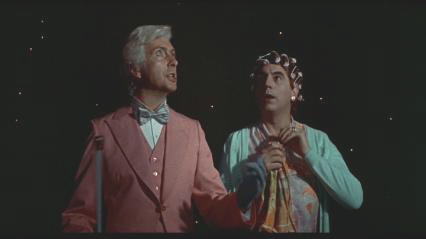
Posted on 09/26/2012 7:22:19 PM PDT by lbryce
Like photographers assembling a portfolio of best shots, astronomers have assembled a new, improved portrait of mankind's deepest-ever view of the universe.


Called the eXtreme Deep Field, or XDF, the photo was assembled by combining 10 years of NASA Hubble Space Telescope photographs taken of a patch of sky at the center of the original Hubble Ultra Deep Field. The XDF is a small fraction of the angular diameter of the full moon.
The Hubble Ultra Deep Field is an image of a small area of space in the constellation Fornax, created using Hubble Space Telescope data from 2003 and 2004. By collecting faint light over many hours of observation, it revealed thousands of galaxies, both nearby and very distant, making it the deepest image of the universe ever taken at that time.
The new full-color XDF image is even more sensitive, and contains about 5,500 galaxies even within its smaller field of view. The faintest galaxies are one ten-billionth the brightness of what the human eye can see.
ping
Just a tiny fraction of an inch square of the sky.
/johnny
Galaxies like grains of sand...
And some would have you believe it's all just.... coincidence.
I often wonder what the late Carl Sagan thinks about, just now.
“No eye has seen, no ear has heard, and no mind has imagined the things that God has prepared for those who love him.”
Can you imagine the ability to see and know all that has been created, with “knowing” that is not limited by our human perspective and senses...to finally “see” our God’s magnificent tapestry of creation as He sees it.
I can’t wait!
The farther we peer into the heavens the shorter our vision becomes.
Has it found Obama’s birth certificate yet ?
Did you see Nemo the clownfish at the bottom of the picture?
The field is smaller than a grain of sand held at arm’s length. Yet it contains some 5,000+ galaxies. Galaxies typically contain 50-200 billion stars (each). The furthest objects in the field (galaxies and/or proto-galaxies) are reported to be some 13.2 billion light years away, ONE light year, the distance light travels in a year at its basically constant speed of 186,000 miles per second, works out to be about 6 TRILLION miles. So these objects, now redshifted into much longer wavelengths by virtue of universal expansion, are in the neighborhood of 13.2 billion times 6 trillion miles away from us. And they’re 13.2 billion years older by now. Did I screw up on any of this?
Ice water.
The deep, then the ultra deep and now the xtreme deep ... my favorite picture... it is and has been my desk top and if I need to clear my mind and start over I just look at it and go “WOW”
TT
There is a lot more nothing than something out there thats even more amazing

It's been said that the galaxies of our universe are more numerous than all the grains of sand on our planet. Realizing that this image is but a tiny slice of the visible sky, one can't help but ponder that fact in all its enormity.
It is incredible how nature provides all these convenient 'clues' for us to learn about it. From simple starlight (via spectroscopy) we can determine a star's chemical composition, its temperature, its motion, its distance, on and on. We'd never be able to know these things otherwise. The nearest star, aside from the Sun, is roughly 25 trillion miles away.
Lol! Love Monty Python.
“This is the planet Algon, fifth world in the system of Aldebaran, the Red Giant in the constellation of Sagittarius. Here an ordinary cup of drinking chocolate costs four million pounds, an immersion heater for the hot-water tank costs over six billion pounds, and a pair of split-crotch panties would be almost unobtainable.”
http://www.montypython.net/scripts/algon.php
Disclaimer: Opinions posted on Free Republic are those of the individual posters and do not necessarily represent the opinion of Free Republic or its management. All materials posted herein are protected by copyright law and the exemption for fair use of copyrighted works.